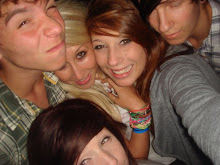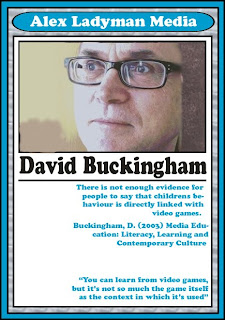About Me

- Alexander Ladyman
- http://www.youtube.com/ladymana93 http://wilsonsmedia2011.edublogs.org/ http://wilsonsmediamarkbook.edublogs.org/
Tuesday, 30 November 2010
RESEARCH - Target Audience
Friday, 26 November 2010
RESEARCH - Media Theory

Saturday, 20 November 2010
RESEARCH - Propps Narrative Theory
Sunday, 14 November 2010
RESEARCH - Moral Panic - Sex Trafficking
Monday, 8 November 2010
RESEARCH - UK Privacy Law
A friend of Mr Kaye had been granted an interlocutory injunction preventing the editor (Anthony Robertson) and the newspaper (the Sunday Sport) from using the material, which they appealed.
Lord Justice Glidewell said "It is well-known that in English law there is no right to privacy, and accordingly there is no right of action for breach of a persons privacy. The facts of the present case are a graphic illustration of the desirability of Parliament considering whether and in what circumstances statutory provision can be made to protect the privacy of individuals."
In the absence of the right to privacy, Mr Kaye's advisers based their claim on libel, malicious falsehood, trespass to the person and passing off. The Court of Appeal ruled that none of these torts was applicable except malicious falsehood, and on this basis the only remedy available was that the newspaper was prohibited from stating any inference that Mr Kaye had consented to the story.
The academic response to this ruling has been negative, e.g. "Kaye remains a compelling demonstration of the limits of both existing English law and of the limitations of an approach that relies upon inadequate existing remedies to protect privacy."
1998-2000
The Human Rights Act 1998 is an Act of Parliament of the United Kingdom which received Royal Assent on 9 November 1998, and mostly came into force on 2 October 2000. Its aim is to "give further effect" in UK law to the rights contained in the European Convention on Human Rights. The Act makes available in UK courts a remedy for breach of a Convention right, without the need to go to the European Court of Human Rights in Strasbourg. It also totally abolished the death penalty in UK law (although this was not required by the Convention in force for the UK at that time)
2008
In 2008 the editor of the Daily Mail criticised the Human Rights Act for allowing, in effect, a right to privacy at English law despite the fact that Parliament has not passed such legislation. Paul Dacre was in fact referring to the indirect horizontal effect of the Human Rights Act on the doctrine ofbreach of confidence which has moved English law closer towards a common law right to privacy.In response the Lord Chancellor Lord Falconer stated that the Human Rights Act had been passed by Parliament, that people's private lives needed protection and that the judge in the case had interpreted relevant authorities correctly
2011
It has become apparent that many rich and powerful people are taking out injunctions or super injunctions. This has raised the argument, do the public have a right to know, or do the celebrities have a right to privacy.
Tuesday, 2 November 2010
RESEARCH - Roland Barthes
The Hermeneutic Code refers to any element of the story that is not fully explained and hence becomes a mystery to the reader.
The full truth is often avoided, for example in:
Snares: deliberately avoiding the truth.
Equivocations: partial or incomplete answers.
Jammings: openly acknowledge that there is no answer to a problem.
The purpose of the author in this is typically to keep the audience guessing, arresting the enigma, until the final scenes when all is revealed and all loose ends are tied off and closure is achieved.
The Proairetic Code (ACT)
The Proairetic Code also builds tension, referring to any other action or event that indicates something else is going to happen, and which hence gets the reader guessing as to what will happen next.
The Hermeneutic and Proairetic Codes work as a pair to develop the story's tensions and keep the reader interested. Barthes described them as:
"...dependent on ... two sequential codes: the revelation of truth and the coordination of the actions represented: there is the same constraint in the gradual order of melody and in the equally gradual order of the narrative sequence."
The Semantic Code (SEM)
This code refers to connotation within the story that gives additional meaning over the basic denotative meaning of the word.
It is by the use of extended meaning that can be applied to words that authors can paint rich pictures with relatively limited text and the way they do this is a common indication of their writing skills.
The Symbolic Code (SYM)
This is very similar to the Semantic Code, but acts at a wider level, organizing semantic meanings into broader and deeper sets of meaning.
This is typically done in the use of antithesis, where new meaning arises out of opposing and conflict ideas.
The Cultural Code (REF)
This code refers to anything that is founded on some kind of canonical works that cannot be challenged and is assumed to be a foundation for truth.
Typically this involves either science or religion, although other canons such as magical truths may be used in fantasy stories. The Gnomic Codeis a cultural code that particularly refers to sayings, proverbs, clichés and other common meaning-giving word sets.
